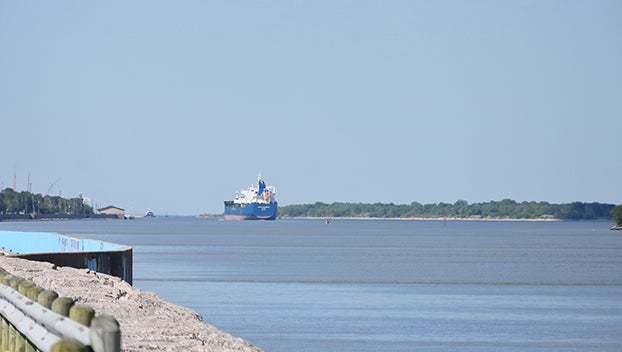MOORE COLUMN: Displaced hogs conquering new territory
Published 10:01 pm Wednesday, March 23, 2016
As the human tragedy of the massive flooding experienced along the Sabine River basin continues to unfold, the wildlife impact manifests.
Besides the usual suspects of snakes, alligators and turtles found in places they do not usually dwell, feral hogs are on the move.
A photo circulated on social media last week showed two huge feral hogs running through a neighborhood in downtown Orange. Another video shows more hogs moving through a flooded area and giving a good scare to two men in the area.
I have verified hogs moving into some wooded areas well within the city limits of Orange where they have not been found before and also a good number of them moving out of the marshes and closer to homes in other areas as well.
Many of the hogs displaced by the floods will return to their former habitation but others will not. Floods and other extreme weather conditions are in fact one way feral hog populations expand.
It is important for people to keep in mind it does not take many hogs to produce many hogs.
Let’s say half a dozen hogs pushed into a city limit area with adequate wooded and grassy areas to remain for the most part hidden, that could turn into dozens of hogs in short order and hundreds in a year or so. That is of course if there is a mix of male and females in the bunch.
Billy Higginbotham with Texas Agrilife Extension wrote the wild pig is the most prolific large mammal on the face of the Earth—but they are not “born pregnant”!
“The average is between 5 and 6 pigs per litter. Sows have approximately 1.5 litters per year. Are more litters per year and larger litter sizes possible? Absolutely yes! However, I am using long-term averages, not what can occur under ideal conditions which usually unsustainable over the long haul.”
“Young females do not typically have their first litter until they are 13 plus months of age, even though they can be sexually mature at 6 to 8 months of age or even earlier in some cases.”
Higginbotham has said there are only two types of landowners in Texas: those who have hogs and those who will have hogs.
The recent floods are not a guarantee hogs that have pushed into new territory will expand but they will try. Much of their success will depend on how much effort is put on eradicating them once they are located.
Hogs are pesky and certainly cause damage but they are truly amazing animals that can survive in virtually any condition and are smarter than most animals including dogs.
We tend to think of them as part of the natural order here but they are not technically speaking.
Higginbotham wrote that in 1539 in what is now Florida the first hogs were released by Hernando de Soto.
“These 13 pigs were originally domestics released to be used as a future food source by the explorers. De Soto captured these particular pigs in Cuba and brought them into what is now Tampa Bay, Florida.”
“Obviously there were some escapes during the exploration and these pigs became the seed stock for future wild pig/feral hog populations. The wild pig herd that accompanied De Soto’s party increased to approximately 700 head by the time the exploration entered into what is now Texas in 1542.”
These animals have a long history in the Lone Star State and their story is not finished by any stretch of the imagination.
Feral hogs are on the move so stay alert, not just when you’re in the great outdoors but if you live nearby the Sabine River perhaps when you’re out checking your mail.
I live in West Orange and about four years ago, my wife Lisa and me saw a 150-pounder standing by our mailbox.
I’m just glad we saw it before it saw us.
NOTE: Citizens living in city limit areas should report hogs to animal control and not try to take matters into your own hands where discharging firearms is not allowed.
(To contact Chester Moore, e-mail him at chester@kingdomzoo.com. You can hear him on “Moore Outdoors” Fridays from 6-7 p.m. on Newstalk AM 560 KLVI or online at www.klvi.com.)





